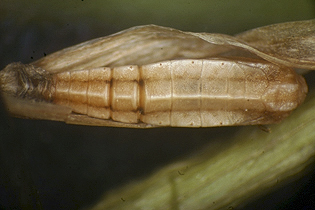
The traditional definition of this group (Elachistidae sensu strictu), which is followed here, in accordance with the revision by Braun (1948) and the Hodges et al. (1983) checklist, includes Elachista plus a few allied genera (about 60 described species, in eight genera, in North America as of the 1983 checklist; moderately well represented in Illinois). An expanded concept of Elachistidae, in which traditional Elachistidae was included as a subfamily, Elachistinae, was presented by Hodges (1999). A phylogeny of Elachistidae s. s. was published by Kaila (1999a) and revisited by Kaila and Sugisima (2003). The former author also has covered Nearctic components of Elachistidae in several excellent taxonomic papers (Kaila 1995a, 1995b, 1996, 1997, 1999b).
Larvae of Elachistidae are blotch leaf miners, almost always on grasses (Poaceae) or on sedges/rushes (Cyperaceae), but with a few species using dicots, e.g., wild oregano, Cunila origanoides, in the mint family (Lamiaceae). Active leaf mines of some elachistid species can be found very early in the year; apparently, these larvae overwinter in the mine and resume feeding as early as February in the second year. The great majority of elachistid species in Illinois are insects of deciduous forest, which is where their leaf mines should be sought. Despite their grass-mining larval habits, in Illinois they are not seen to be a component of grass-dominated communities such as prairies.
Elachistid leaf mines on grasses and sedges can be differentiated from those of Cosmopterix spp. (Cosmopterigidae), which likewise are blotch leaf miners and which use many of the same host plants as Elachistidae, by the fact that, in Elachistidae, the larval frass is retained within the mine, where it can be seen scattered throughout, whereas in Cosmopterix, frass is removed from the mine, where it can be seen as a small blackish accumulation at one end of the mine. Also, in general, elachistid mines tend to be whitish, whereas Cosmopterix mines tend to be yellow, but exceptions to this may occur.
After it finishes feeding, the elachistid larva leaves the mine to pupate, often in the depressed crease that occurs at the midvein of a leaf of the host plant. Some species pupate under a slight lattice-like sheet of silk, whereas others do not spin at all. The articulation between the front and hind parts of the pupal abdomen allows the posterior part of the abdomen to move only in the sagittal plane; this is similar to the situation seen in certain other microlepidoptera groups (e.g., Depressariinae). The pupa of one species, Dicranoctetes brachyelytrifoliella, is adorned laterally with spiky cuticular projections. Pupae of typical Elachistidae species lack the cuticular projections seen in Dicranoctetes, but they present a distinctive appearance via being laterally and dorsally keeled (Fig. 1).

Figure 1. Elachista leucofrons. Pupa, of the type representative of most Elachistidae (dorsal aspect).
Adult Elachistidae display distinctive male genital morphology, in which the valve is elongate and apically rounded, and the gnathos is spined (and sometimes bifid). Sight recognition of Elachistidae is best effected on basis of coloration and pattern, which fall into several categories, shown below (these groupings are presented here strictly for convenience of recognition; they are not meant to represent monophyletic units, whether or not they actually do so).
The blackish Elachista species with metallic or white markings on the forewing are somewhat similar to some Mompha spp. (Coleophoridae: Momphinae, treated here as Family Momphidae, to coincide with the 1983 checklist), but moths of these two groups can be differentiated by the fact that the black-and-white Mompha spp. have raised tufts of scales on the forewings, whereas elachistids do not. As for the white Elachista species, the only other common, similarly-sized Illinois microleps in which the forewing is flat-finish white are some of the species of Coleophora (Coleophoridae). Coleophora, however, have relatively narrower, more elongate forewings than do Elachista, and they display a distinctive resting posture in which the antennae are held together and projected straight forward. Other Illinois microleps that are predominantly or entirely white either are considerably larger than Elachista, e.g., yucca moths (Prodoxidae) or are considerably smaller and more shining-opalescent white, e.g., Phyllonorycter, Phyllocnistis (Gracillariidae), Argyresthia (Argyresthiidae), Pseudopostega (Opostegidae).
Elachista epimicta (Fig. 2) is a large elachistid, the larva of which is a leaf miner on grasses. It matures in the third week of April in central Illinois. Braun (1948) cited Hystrix patula (preferred) and Elymus spp. as hosts. The larval leaf mine occupies the apical one third or so of the host leaf.
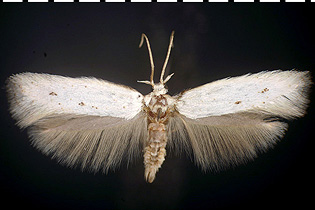
Figure 2. Elachista epimicta. Adult, reared from leaf mine on a woodland grass (Poaceae).
Nothing is known of the larval biology of Elachista acenteta (Fig. 3). The largest numbers of adults have been collected in southeastern Canada. As for USA records, Kaila (1997) reported the species as occurring in Colorado and Nebraska. In Illinois, E. acenteta has been collected in a wet sand area in Iroquois County, in mid-June; James Vargo has collected it in the same habitat in an adjacent county in Indiana, also in mid-June. These represent the first records of this species from these two states, and they provide something of a connecting point between the two geographically-remote areas of previously-known occurrence.
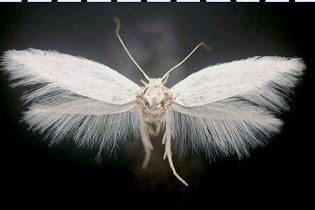
Figure 3. Elachista acenteta. Adult, collected at light, Iroquois County, Illinois, mid-June.
The larva of Elachista glenni (Fig. 4) most likely feeds as a leaf miner on a sedge or a rush (possibly Scirpus sp.). The adult appears in June.
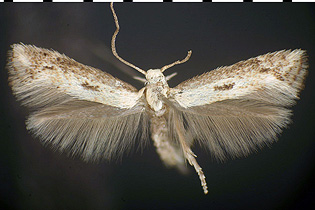
Figure 4. Elachista glenni. Adult, collected at light.
Elachista madarella (Fig. 5) is a leaf miner on sedges of the genera Carex and Scirpus, with mines occurring from February through early May. The leaf mine of this species usually appears to be unoccupied, but close examination reveals that the larva extends the mine to the very base of its host leaf, and it is there that the larva usually can be found. In central Illinois, the adult of this species is common at light in deciduous forest in late June.
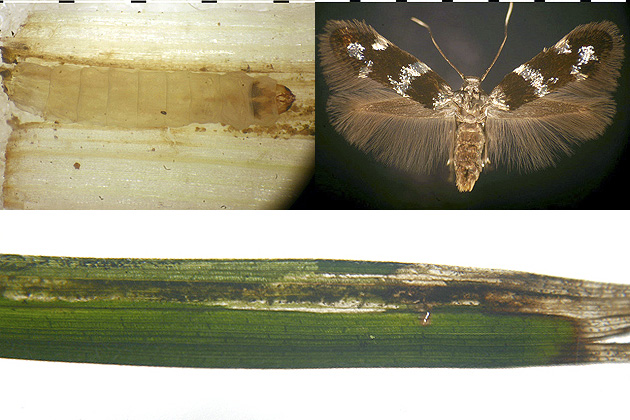
Figure 5. Elachista madarella. Larva (removed from leaf mine); leaf mine on a sedge, Carex sp. (Cyperaceae); and adult moth.
Elachista leucofrons (Fig. 6) is a leaf miner on grasses of low-lying deciduous forest; according to Braun (1948), Elymus canadensis and E. virginicus are preferred, with Hystrix sp. less commonly recorded as a host. Active mines appear from late February through mid-April; apparently, there is only one generation per year. Unlike E. madarella, the larva of E. leucofrons does not mine to the base of its host leaf; therefore, in an occupied mine, the larva can be seen in the main part of the leaf mine at all times, as shown in Fig. 6.
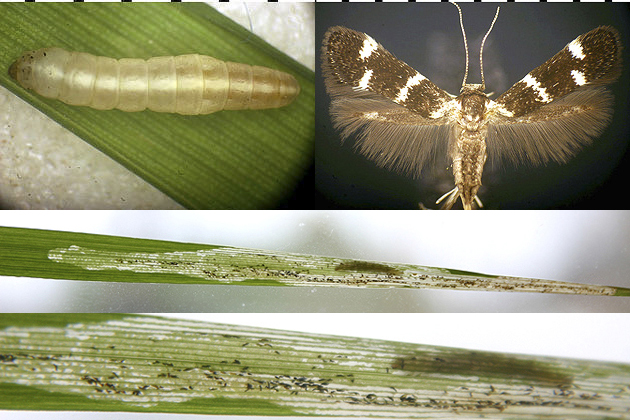
Figure 6. Elachista leucofrons. Top: left, larva (removed from leaf mine); right, adult moth; bottom: occupied leaf mine on a woodland grass (Poaceae).
The larva of Elachista albicapitella (Fig. 7) is active in early spring, as a leaf miner in some of the same grass species that are used by E. leucofrons, so that both moths sometimes emerge in the same rearing lot. The adult of E. albicapitella is closely similar to E. leucofrons on external appearance but differs in having the head and the posterior dorsal tuft of the thorax white, whereas both are dark brown (sometimes intermixed with white scales, but never contrastingly pure white) in E. leucofrons (Fig. 8). There are also differences in male genital morphology.
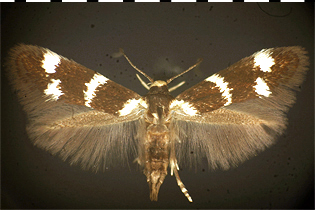
Figure 7. Elachista albicapitella. Adult, reared from leaf mine on a woodland grass (Poaceae).
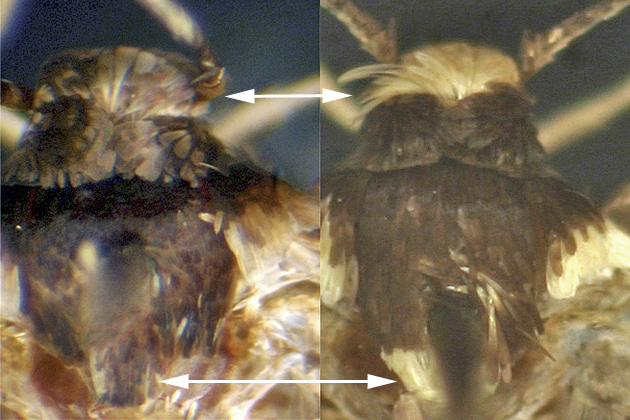
Figure 8. Closeup of head and thorax of adult Elachista leucofrons (left) and E. albicapitella (right) showing the color differences cited above.
This genus was synonymized under Elachista in the phylogeny of Kaila (1999a).
Elachista illectella (Fig. 9) is a grass leaf miner, with larvae occurring "almost throughout the year, even in the winter...on many species of grass" (Braun 1948). Included in the host list given by Braun are Poa praetensis, Poa spp., Agrostis spp., Hystrix sp., Elymus sp., Oryzopsis sp., Bromus sp., and Phleum. The adult, which commonly appears at light in deciduous forest, is somewhat smaller than most of the Elachista species. The color and pattern are of the "blackish with white markings" type, but the white fasciae and patches on the forewing are more diffuse, with the dark areas more heavily suffused with white scaling, than in the other Elachista spp. of this color pattern.
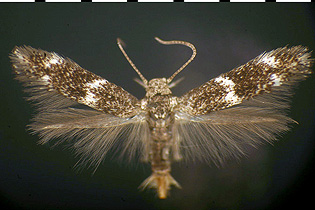
Figure 9. Elachista illectella. Adult, reared from leaf mine on a woodland grass (Poaceae).
This genus, as with Cosmiotes, was subsumed into Elachista in the phylogeny of Kaila (1999a).
The larva of Elachista brachyelytrifoliella (Fig. 10) occurs from July through October, in a noticeably whitish leaf mine on any of several grass species. According to Braun (1948), Muhlenbergia spp. are preferred, but the larva also has been recorded from Brachyelytrum aristatum and Uniola latifolia.
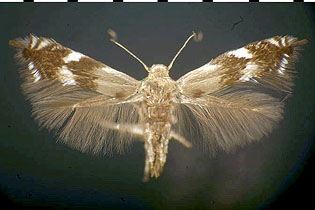
Figure 10. Elachista brachyelytrifoliella. Adult, collected diurnally.
The genus Onceroptila, which was erected by Braun (1948) to accommodate two western-Nearctic elachistid species, was synonymized under Perittia by Kaila (1995b).
The only species of this genus that is likely to be encountered in Illinois is Perittia herrichiella (Fig. 11), which is a European species that has become established in eastern North America. Kaila (1995b) reported it from eastern Canada. More recently, James Vargo, who kindly provided the specimen shown here, has collected a series of adults of P. herrichiella at light in northern Indiana; collection dates range from late May through mid-July, with a concentration in early to mid-June. This apparently is the first USA record for P. herrichiella. Given this, the species might reasonably be expected to be found elsewhere in the north-central and northeastern USA. In Europe, the larva of P. herrichiella makes a typical elachistid leaf mine (full depth, with frass retained inside) on honeysuckle, Lonicera sp. (Caprifoliaceae). According to Dr. George Balogh (who generously provided the mined leaf shown here), P. herrichiella has been established for several years in Michigan, where it feeds on woody non-native (Eurasian) species of Lonicera, with leaf mines being especially common in disturbed and secondary forests in which exotic honeysuckle occurs as an invasive species. It is not known whether the moth has expanded its host range in North America to include any of the native Nearctic species of Caprifoliaceae.
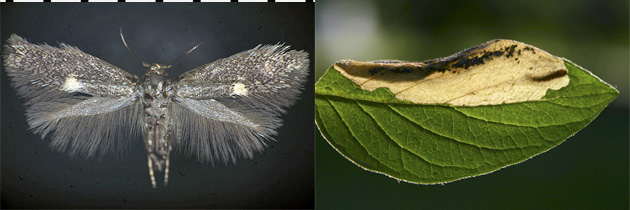
Figure 11. Perittia herrichiella. Left, adult, collected in northern Indiana, specimen courtesy of James Vargo; right, leaf mine on invasive Eurasian bush honeysuckle, Lonicera sp. (Caprifoliaceae), collected in Michigan by Dr. George Balogh.
Back to the list of families